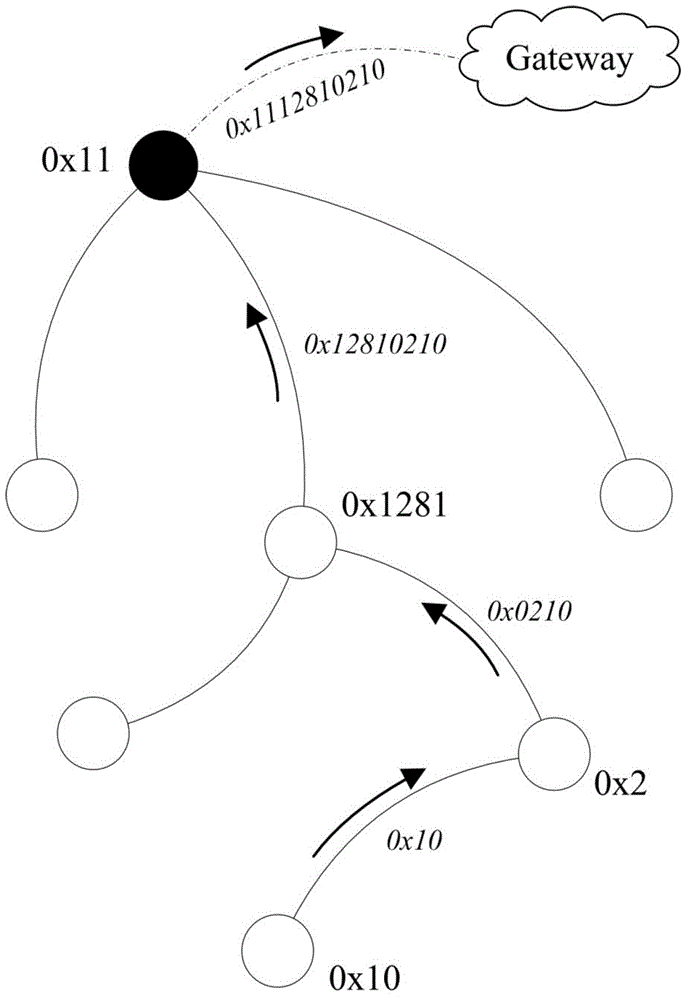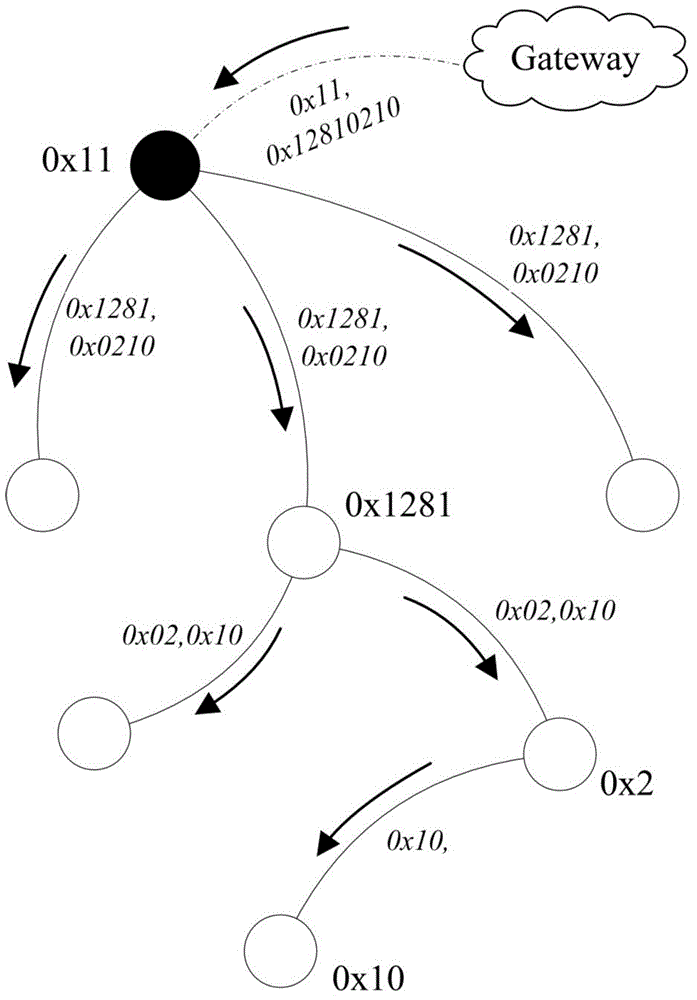Address assignment method for resource-constrained nodes in tree-shaped ubiquitous network
An allocation method and node technology, applied in the field of ubiquitous network communication, can solve problems such as unsatisfactory address allocation strategy and address format, frequent topology changes, etc., to achieve the effect of solving frequent changes and ensuring effectiveness
- Summary
- Abstract
- Description
- Claims
- Application Information
AI Technical Summary
Problems solved by technology
Method used
Image
Examples
Embodiment
[0026] The ubiquitous network in this embodiment is a tree network. Except for the root node, other nodes have one and only one parent node, leaf nodes have no child nodes, and intermediate nodes can have multiple child nodes. The root node is connected to the gateway device.
[0027] 1. Local address generation, encoding and management of nodes
[0028] The local address is an integer type, and its length is in bytes (octet). The length of the local address is scalable, depending on the needs of the network scale. The bit value of the highest bit of the address is 0. If the address length is greater than 1 byte, the remaining bytes of the address start with binary bit 10. When a series of local addresses are connected sequentially, it can be used to mark the start byte of each local address. The schematic is shown in Table 1.
[0029] Table 1 Local address encoding format
[0030]
[0031] Local addresses whose significant bits are all zeros are reserved and not used....
PUM
 Login to View More
Login to View More Abstract
Description
Claims
Application Information
 Login to View More
Login to View More - R&D
- Intellectual Property
- Life Sciences
- Materials
- Tech Scout
- Unparalleled Data Quality
- Higher Quality Content
- 60% Fewer Hallucinations
Browse by: Latest US Patents, China's latest patents, Technical Efficacy Thesaurus, Application Domain, Technology Topic, Popular Technical Reports.
© 2025 PatSnap. All rights reserved.Legal|Privacy policy|Modern Slavery Act Transparency Statement|Sitemap|About US| Contact US: help@patsnap.com



